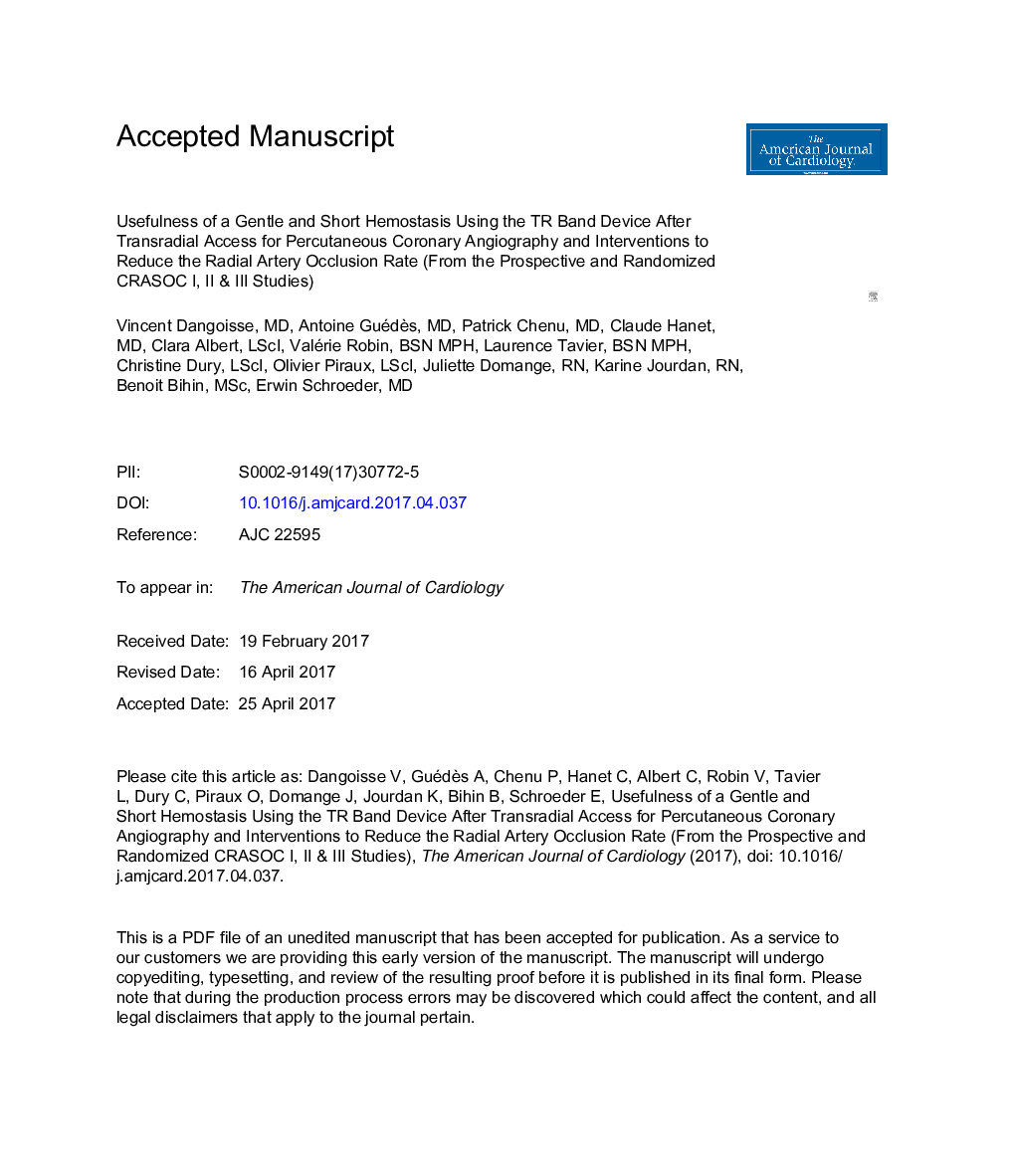| Article ID | Journal | Published Year | Pages | File Type |
|---|---|---|---|---|
| 5594813 | The American Journal of Cardiology | 2017 | 22 Pages |
Abstract
The study sought to evaluate the benefit of the reduction in intensity and duration of the hemostasis obtained with the transradial (TR) Band compression device on the radial artery occlusion (RAO) rate. RAO is the most frequent complication of TR access for cardiac catheterization and limits future use of this safe route. Its occurrence must be minimized. Between 2009 and 2016, 3,616 TR accesses were randomized to TR Band hemostasis during 3Â consecutive protocols: CRASOC I (Compression of Radial ArterieS without Occlusion): 13 versus 10Â cc of air into the TR Band and for 4Â hours of continuous compression; CRASOC II: 10Â cc of air for 3 hours versus 2Â hours of compression; and CRASOC III: 10Â cc of air for 2 hours versus 1.5Â hours of compression and virtual 4F introducer as default sheath (both arms). Radial artery patency was assessed by plethysmography at 24 hours, using Doppler for doubtful or negative plethysmography. The primary end point, 24 hours of RAO, was markedly reduced when hemostasis was soft (10Â cc of air) and short (1.5Â hours) and resulted in a 2.3% rate of RAO versus 9.4% for 13 cc, 4Â hours. Hemostasis was obtained in 89% of patients with only 10Â cc of air and in 97% of patients with less than the recommended 13Â cc. About 8% of patients required more than the 1.5Â hours of hemostasis time. In conclusion, short and soft hemostasis with the TR Band device leads to a low RAO rate.
Related Topics
Health Sciences
Medicine and Dentistry
Cardiology and Cardiovascular Medicine
Authors
Vincent MD, Antoine MD, Patrick MD, Claude MD, Clara LScI, Valérie BSN, MPH, Laurence BSN, MPH, Christine LScI, Olivier LScI, Juliette RN, Karine RN, Benoit MSc, Erwin MD,
